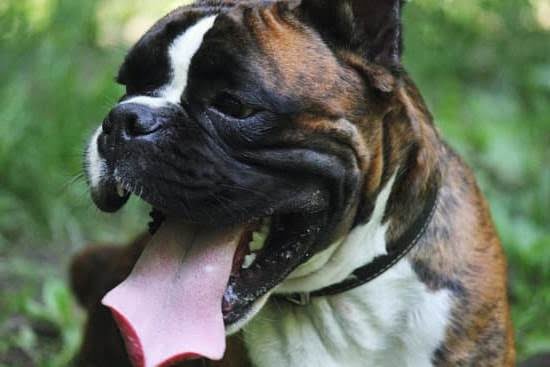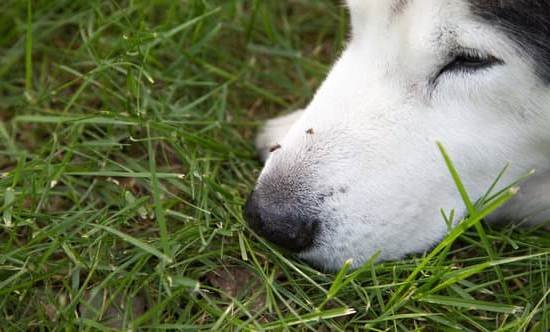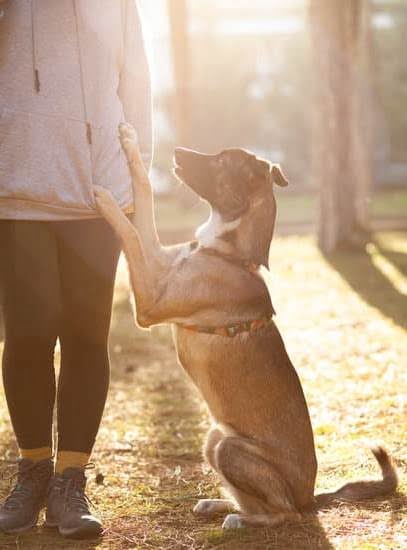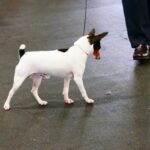Introduction to Training Australian Shepherd Cattle Dog
The Australian Shepherd Cattle Dog is a breed known for its intelligence and loyalty. They are great companions and ideal herding dogs, as they were originally bred to drive sheep and cattle. These agile, versatile dogs were also bred for their independent thinking abilities, alertness and tendency to work hard.
Aussies are highly obedient when trained properly, but require strong leadership to understand the rules of their home and environment. To get the most out of the training process with an Aussie, it is important to have patience, clear expectations, set boundaries, provide rewards often and be consistent in your approach. This breed prefers working in tandem with their owner rather than using a traditional obedience training approach so positive reinforcement techniques are often recommended.
In addition to being quick learners, Aussies tend to be active and energetic breeds which means they need plenty of physical activity to remain healthy and mentally engaged. The ideal exercise routine for this breed should include regular walks on-leash as well as off-leash time playing fetch or tug-of-war in a large open space where they can explore without fear of running away or getting too close to harm’s way. Additionally structured activities such as agility courses can be great outlets for their energy while helping them stay focused on tasks at hand.
Overall, the Australian Shepherd Cattle Dog is an ideal breed for those looking for an intelligent companion who will stay loyal yet independent – provided they receive proper training from a knowledgeable pet parent who has time dedicated to stimulating their minds!
Preparing for Your Australian Shepherd Cattle Dog
When preparing for your Australian Shepherd Cattle Dog, you’ll want to make sure you have purchased all the necessary items such as a leash, collar and toys. A sturdy leash is essential for walking your pup and can also be used for quick correction if needed. Plus you’ll need quality treats to properly reward your pup when they listen to commands like sit or stay. You’ll also want to ensure your home is pup-proofed with bite-resistant items such as chew toys and food bowls so that they know it’s okay to chew on the right items. Puppy proof your home by removing any sharp or small items that may pose choking risks, covering electrical outlets and covering furniture edges with furniture protectors. Furthermore, provide a designated area of the house where he/she can go, like a crate- this will help with potty training and serves as a secure location for when he/she needs some quiet time.
Selecting an Australian Shepherd Cattle Dog
When selecting an Australian Shepherd Cattle Dog, there are important considerations to be taken into account. Firstly, it’s important to consider where you buy your pup from. A reputable breeder who cares for their animals is a must; a good rule of thumb is that if the breeder won’t show you recent vet records for the puppy or has no contact with previous owners and cannot provide basic information about the puppy’s pedigree, then these are signs that you should avoid dealing with them.
Once you have found a responsible and caring breeder, you should consider what type of pup would be best suited to your lifestyle. Australian Shepherds make excellent and loyal family pets but they need lots of exercise and require plenty of daily stimulation to keep them mentally engaged. If your home is small or your lifestyle is very sedentary, it may not be practical to purchase an Aussie shepherd – other breeds may better fit your situation in this case.
You should also bear in mind that as herding dogs they can sometimes exhibit strong predatory instincts (which are normal behaviour) so introducing them slowly and carefully to small animals such as cats is essential until they learn how to interact respectfully. Knowing this in advance will help to inform which puppies may suit your needs better.
As for training, Australian cattle dogs are intelligent animals who are eager to please their owners which makes training straightforward when handled well. It’s recommended that positive reinforcement methods are used as much as possible – create an environment of trust and reward proper behaviours with praise and treats rather than disciplining incorrect behaviours too harshly as this can cause fear-based aggression issues later on.
Building a Bond with Your Australian Shepherd Cattle Dog
Building a bond with your Australian Shepherd Cattle Dog is essential in getting the most out of their training. First, you must establish trust between yourself and your dog. This can be done by establishing predictable routines and keeping each interaction consistent. Set boundaries for what behaviors are acceptable and unacceptable in order to help them understand where the limits are and how to stay within those parameters.
Positive reinforcement techniques are also important when it comes to building a relationship with your Aussie cattle dog. Any time your dog takes an action which is praised, provide plenty of verbal and physical reward so that it knows it has done something right. Treats can also be used as rewards during training sessions, but use them sparingly – otherwise your pup will become overly motivated by treats alone instead of understanding why you’re praising its behavior.
Once foundational obedience commands have been established, advanced techniques such as agility or scent work should be considered for further training goals. When engaging in an activity like this, provide positive reinforcement after each successful behavior as your pup learns on the job and make sure to give plenty of breaks if they appear stressed or overstimulated at any point while they remain focused on being successful going forward.
Teaching Training Basics
Australian Shepherd Cattle Dogs, also known as “heelers,” are highly intelligent and trainable dogs that make wonderful working animals. When properly trained, the Australian Shepherd Cattle Dog is an incredibly useful and loving addition to the family. Training should begin early for best results and with patience and consistency you will be rewarded with a loyal companion.
Housebreaking should follow the same techniques as other breeds. Set up a consistent routine and use positive rewards when your puppy does it right. Crate training can also be useful for providing a safe denning place for your pup. To prevent messes in the house, take your dog out every two hours, especially after eating or napping. Take time to praise your puppy when they relieve themselves outside as praising them will help remind them this is where they should do their business.
In terms of basic commands, teaching sit and stay are essential obedience skills. Start by showing him how to do it if he doesn’t understand what you mean; stand in front of him holding a treat in one hand then lift it above his head while saying “Sit” until he sits down; repeat this process until he is able teach you on his own. Teaching “stay” comes next: Make sure you send a clear message by showing him what stay means while saying it simultaneously followed by giving him the reward once he completes the desired behavior correctly; repeating this process will let him know what behavior is expected from him each time he hears that command word – stay!
A successful form of training involves repetition and consistency throughout all stages of teaching new things which most certainly applies to training these clever dogs! Stay patient but firm so that your Australian Shepherd Cattle Dog knows exactly what behaviour is expected from them – Good luck!
Advanced Training
Agility is an intense, exciting and fast-paced sport that continues to gain popularity. In agility, the handler guides a dog through an obstacle course of jumps, tunnels, tire jumps, A-frames and other objects while encountering such additional elements as pauses and timing cues. Australian Shepherd Cattle Dogs excel in agility due to their intelligence, athleticism and willingness to please.
Flyball is a fun game that involves teaching your dog how to run with a team of other dogs. By retrieving a tennis ball from a box at the end of the course and returning it to his handler, your pooch will be honing his skills in agility, speed and obedience training.
Tricks are great way to further train your pup while having fun! For example, teach your dog to play dead (roll down on command) or spin around in circles during fetching games. This will help him learn increasingly complex commands and analytical problem solving skills.
Commands are useful for teaching basic obedience as well as improving communication between you and your pet. Start by teaching them basic commands such as “sit,” “come,””leave it” etc; Eventually add more specific tasks like going onto their mat when needing some down time as well as more advanced commands such as “go into your crate” when needed.
Common Issues
Excessive Barking:
Australian Shepherds are known to bark frequently, so it is important to identify when they are barking excessively, and why. If they bark when faced with no stimulus, this can be a sign of anxiety or that they have too much energy. To stop this kind of barking, provide them with activities that will tire them out mentally and physically. Providing positive reinforcement whenever they do not bark will reward them for good behavior.
Chewing: Chewing is a common issue among Australian Shepherd Cattle Dogs, as they are prone to chewing on furniture, shoes, and other items. It is important to redirect your dog’s attention if it begins chewing on something it shouldn’t and distract them with an appropriate chew toy instead. Also make sure that the area around your dog has no objects or materials that tempt them to chew. Keep all tempting objects put away in an area inaccessible to your pup and provide plenty of chew toys for alternative options.
Digging: Digging is part of most dogs’ natural instinct, so it can be difficult to discourage this behaviour without being harsh on your pup. Firmly tell your dog “no” whenever he begins digging and promptly remove him from the situation by distracting him with his favorite activities or toys. You can also try using deterrents such as chicken wire around the area where he likes to dig; this will help reduce his access to these areas while making sure that he still has another area full of soft sand to safely perform his natural behaviour in.
Conclusion
To successfully train an Australian Shepherd Cattle Dog, you must provide lots of opportunities for physical and mental stimulation. When possible, take your dog outdoors to allow them to expend energy and interact with their natural environment. Exercise sessions can involve activities such as running, swimming, or herding livestock. Training calls for consistency from all family members and should include the use of positive reinforcement. To reinforce good behaviors, offer praise, treats, toys, and other rewards for desired behavior. Additionally, socialization is key to helping them become strong companions who understand how to behave in various life situations. Finally, if you need additional help while training your Aussie Cattle Dog, there are many resources available including books, DVDs or classes offered by organizations specifically dedicated to the breed. Consistency is the key when it comes to successful training so stay focused on positive reinforcement and collaborate with experienced professionals if needed.

Welcome to the blog! I am a professional dog trainer and have been working with dogs for many years. In this blog, I will be discussing various topics related to dog training, including tips, tricks, and advice. I hope you find this information helpful and informative. Thanks for reading!





